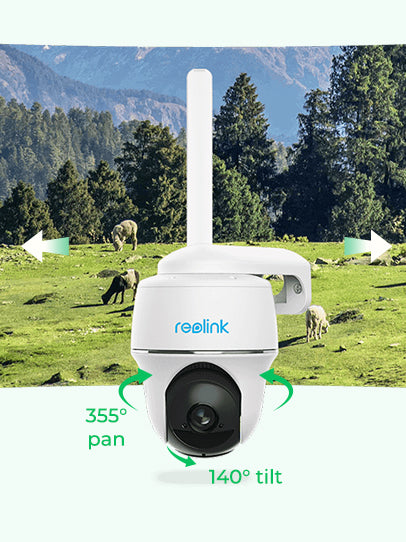Unleashing Internet Freedom: Understanding Portable Hotspots

In today’s fast-paced digital world, staying connected is more than a convenience—it’s a necessity. Whether you’re a remote worker chasing deadlines from a beachside cafe, a student researching in the quiet corner of a library, or just someone who values the freedom to access information on the go, understanding the magic behind portable hotspots can transform your online experience. Let’s dive into the world of portable hotspots, explore how they work, and unravel the differences between Wi-Fi and hotspots.
What is a portable hotspot?
A portable hotspot is a compact wireless device that leverages cellular network data (such as 4G or 5G) to create a personal Wi-Fi network. This means you can establish a private, secure internet connection point in any location covered by mobile signal, free from the constraints of fixed broadband or public Wi-Fi, enabling true online freedom—whether on business trips, outdoor adventures, or in any situation away from conventional network access points.
What are hotspots and how do they work?
Hotspots are access points that provide internet connectivity to devices like smartphones, tablets, and laptops through a wireless local area network (WLAN) typically using Wi-Fi. These can be broadly categorized into two types: public hotspots and portable (or personal) hotspots.
Public Hotspots
Public hotspots are usually offered in locations such as cafes, hotels, libraries, airports, and other places where people gather. They’re part of the venue’s amenity package and allow you to connect to the internet, often for free or for the price of a coffee or a room. The downside? They can be insecure and unreliable at times.
Portable Hotspots
Portable hotspots, on the other hand, are private Wi-Fi networks you can take with you. They use cellular data connections from a mobile service provider to create an internet connection. Once the device establishes a connection with the cellular network, it acts as a router, sending out a Wi-Fi signal that your other devices can connect to. All it takes is a data plan and a good cellular signal, and you can set up your own private internet connection in most places around the world.
Here’s how portable hotspots work:
Connect to Cellular Network: The hotspot device connects to nearby cellular towers, using 3G, 4G, LTE, or 5G networks, to access the internet.
Convert to Wi-Fi: The device then converts the cellular signal into a Wi-Fi signal.
Broadcast Wi-Fi: It broadcasts this signal to a specified range, allowing nearby Wi-Fi-enabled devices to connect to it.
Access Internet: Devices connected to the portable hotspot can now access the internet as if they were using a traditional Wi-Fi network.
Portable hotspots work wherever there is cellular coverage, which makes them incredibly useful for staying connected while traveling or in areas without reliable broadband service. They also offer enhanced security compared to public Wi-Fi because you have control over who accesses your network.
What is the difference between Wi-Fi and hotspot?
The terms “Wi-Fi” and “hotspot” are often used interchangeably, but they refer to different concepts in wireless networking.
Wi-Fi is a technology that allows electronic devices to connect to a wireless Local Area Network (LAN), typically facilitated by a wireless router or access point. When you set up a Wi-Fi network at home or work, you’re creating a small bubble where devices can connect to the internet without cables. This bubble is made possible by a router, which is connected to a broadband internet service via a physical cable. The router then broadcasts the signal wirelessly, and devices with Wi-Fi capability within range can connect to this network following a standard protocol known as IEEE 802.11.
A hotspot, on the other hand, generally refers to a public sharing of an internet connection. It can be a dedicated device that shares its own cellular data connection as a Wi-Fi network (portable hotspot) or it can be a feature on a smartphone that allows the phone to share its cellular data connection with other devices (mobile tethering). The key difference here is that a hotspot doesn’t necessarily create a Local Area Network for file sharing, printers, and other LAN features—it’s primarily focused on providing internet access.
To summarize, here are some key differences:
Source of Internet Connection: Wi-Fi usually uses a fixed broadband connection from a physical router, while a hotspot uses a mobile data connection.
Mobility: Wi-Fi is often stationary, tied to the location of the router. A hotspot, especially a portable one, is mobile and travels with the user, drawing on cellular networks for an internet connection.
Purpose: Wi-Fi is typically used to provide both internet access and network connectivity for multiple devices in a specific area, such as a home or office. A hotspot is mainly designed to provide internet access to devices when traditional Wi-Fi isn’t available.
Range and Capacity: Wi-Fi networks usually have a broader range and can support many devices simultaneously due to their use of a broadband connection, whereas hotspots may have limitations based on mobile data bandwidth and signal strength.
In essence, portable hotspots embody the spirit of modern connectivity—freedom, security, and mobility. They offer a tailored solution for individuals and professionals seeking uninterrupted internet access while minimizing reliance on potentially insecure public networks. By understanding how portable hotspots work and how they differ from traditional Wi-Fi networks, you’re better equipped to make informed decisions about your internet connectivity needs, whether at home, in the office, or on the move.












